Excerpts from Jim Conrad's
Naturalist Newsletter
from the August 12, 2012 Newsletter issued from the woods of the Loess Hill Region a few miles east of Natchez, Mississippi, USA
POISON IVY FRUITS TURNING WHITE
Poison Ivy, TOXICODENDRON RADICANS, snakes up the side of a big Black Oak tree next to my trailer. A side branch heavy with fruits is shown below:
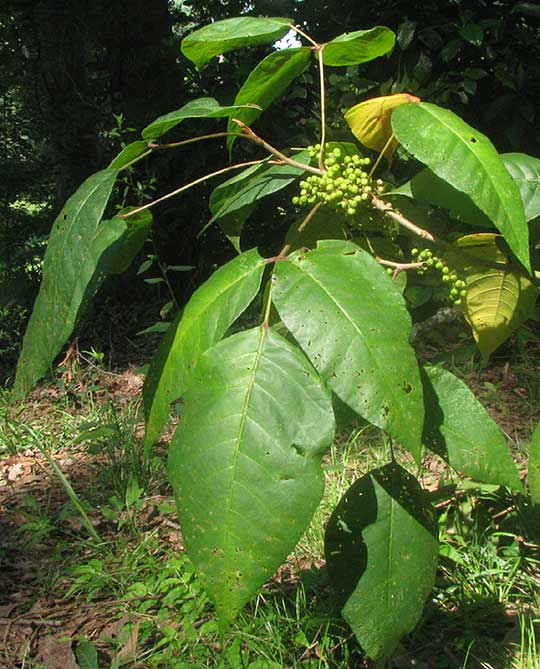
The easy way to distinguish Poison Ivy from other non-dermatitis-causing vines is that its leaves are trifoliate -- they're compound, consisting of three leaflets, easy to make out in the photo. The old saying is, "Leaflets of three, let it be... "
In that picture most of the fruits are green but a few are white. A close-up showing what's happening is shown below:
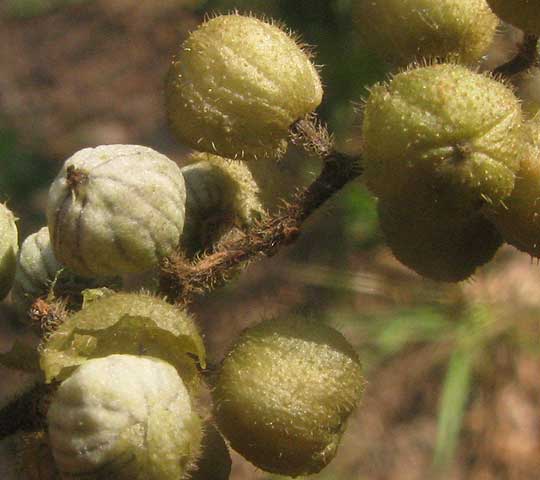
That picture shows that each fruit is covered with a pale, green, hairy "skin" and in some places that covering is separating from the white seed. Probably a bird has come nibbling at the skin. Otherwise the fruit would remain intact, the covering would turn white and wrinkled, and later birds will swallow the whole fruit, later to regurgitate the big seed in a new environment.
Here both Poison Ivy and Poison Oak are common. In general, Poison Ivy climbs high into trees while Poison Oak remains shrubby. However, we've seen in Oregon that Poison Oak sometimes becomes vinelike. Therefore I was sure to get that close-up of a fruit because Poison Oak's fruits lack the hairs and tiny bumps at the bases of hairs seen in the picture. Therefore we know we have Poison Ivy and not a viny Poison Oak.
There's taxonomic confusion about the different varieties of Poison Ivy, with variations of leaf hairiness helping define the varieties. Just for future fieldworkers wondering how hairy Poison Ivy leaves are in southwestern Mississippi I took the picture below:
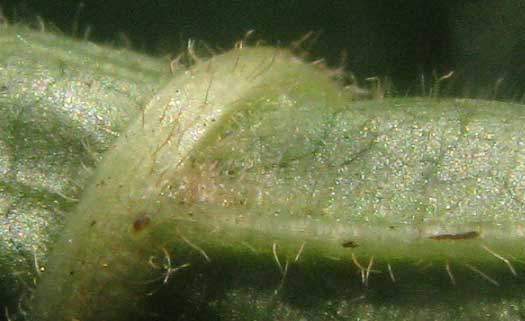
Poison Ivy doesn't twine around stems like morning glories but rather its woody stems sprout adventitious roots that anchor the stem as it vertically ascends the host tree's bark, as shown below:
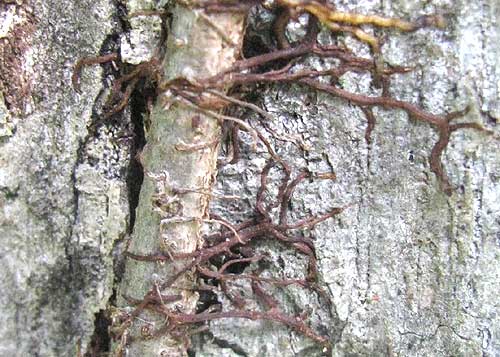
One neat feature about the Poison Ivy plant is that its buds are "naked" -- no protective scales cover them, as is the case with most buds on woody stems in our area. Instead, the future leaves and stems are invested heavily with rusty-colored hairs, as shown on the terminal bud below:
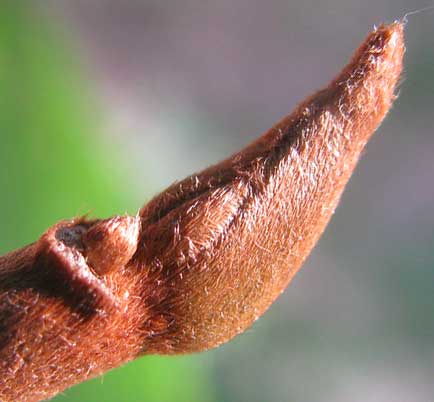
Naked buds are most commonly found on tropical plants, even though Poison Ivy occurs deep into Canada. However, Poison Ivy does belong to the Cashew Family, the Anacardiaceae, which is mostly tropical. That family embraces not only Cashew trees but also Mangos and Pistachios.
Poison Ivy's rashes are allergic reactions, and normally with allergies some people get them and others not. When I was a kid I would lie in Poison Ivy just to freak out my family, for I was completely resistant to its effects. Reaching my 50s, however, I began developing a little sensitivity to it. Juice from a broken stem daubed onto my skin would cause a mild rash but merely handling leaves and unbroken stems still is no problem for me. I'm surprised to read that in the old days one remedy for Poison Ivy rash was to rub Poison Ivy leaves on the rash, and even to eat the leaves. If I were sensitive to it, I don't think I'd experiment with that remedy.
In the fall it's impressive how many Poison Ivy fruits are available, and how many birds crave them, particularly woodpecker, warblers and vireos.
Poison Ivy thrives best at forest edges. Therefore, this is one species that has benefited from America's forests being reduced to many smaller plots.